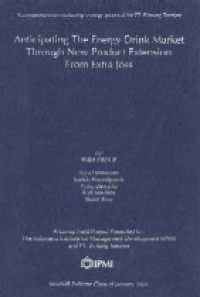
Revenue Management in Singapore Airlines Jakarta
| Gmd : Text
| Availability :
| 00000008132 | 238 | (GFP) | Available - Ada |
The first rule of the airlines business is that an empty seat after the plane takes off is as worthless as a piece of rotten fruit. Filling the seats at the highest level is considered technically attainable. The airlines have figured out how to pack their planes by selling the same seat at a variety of prices.
Revenue Management (RM) has provided the airlines with the capability to optimize space allocations with a view to maximize revenues. The technique is to calculate the best pricing policy for optimizing profits generated by the sale of product based on real time modeling and forecasting of demand behavior per market micro segment. Integrated control and management of price and availability with customer's willingness to pay for a service rendered at that time is necessary in a way to maximize profitability and to compete more effectively in the complex and ever-changing market environment.
By doing RM, Singapore Airlines (SIA) Jakarta seeks to increase revenue and reduce lost opportunity in revenue. One of the important steps in understanding the revenue management practices in SIA is to identify fare product differentiation and inventory control as the major key factors in RM. The application of seat inventory control techniques in such a fare product structure allows SIA to protect seats for the most valued passengers when demand is high and not discounts passengers from filling lower demand. A powerful tool to study RM is by developing a model and analyzing its performance under various conditions. Actual revenue is obtained by multiplying the potential uplift passenger in each sub-class to each to specific destination with the average fare to each destination. Then multiplying total average uplift local sales in economy class destination with the highest fare generates optimum potential revenue.
In implementing RM, one important aspect, which is mandatory for SIA Jakarta to record, is the demand for specific destination in each flight number in sub-classes.
Monitoring financial and passenger traffic data will give clue to forecasting demand behavior, market segmentation and revenue calculation. The calculation results determine the tendency of market segmentation combined with revenue contribution to the most profitable specific areas or routes. Determination of sub- class design and its nesting structure allow the airlines to allocated seats and establish fares based on the demands per market micro segment. Highest revenue opportunity could be achieved in inventory control implementation focusing on potential significant core customers, adapting to the recent market condition.
Reseach Location: PT. Singapore Airlines Indonesia
Supervisor: Ir. Alexander Cyrus, MSc.
Accepted on (2 April 2002)
Read at Library Only.
| Series Title |
-
|
|---|---|
| Call Number |
238
|
| Publisher Place | Jakarta |
| Collation |
iii, 55p. : exhibits, figs., tabs, apps.; 27cm.
|
| Language |
English
|
| ISBN/ISSN |
-
|
| Classification |
-
|
| Media Type |
-
|
|---|---|
| Carrier Type |
-
|
| Edition |
-
|
| Subject(s) | |
| Specific Info |
-
|
| Statement |
-
|
| Content Type |
-
|
No other version available







